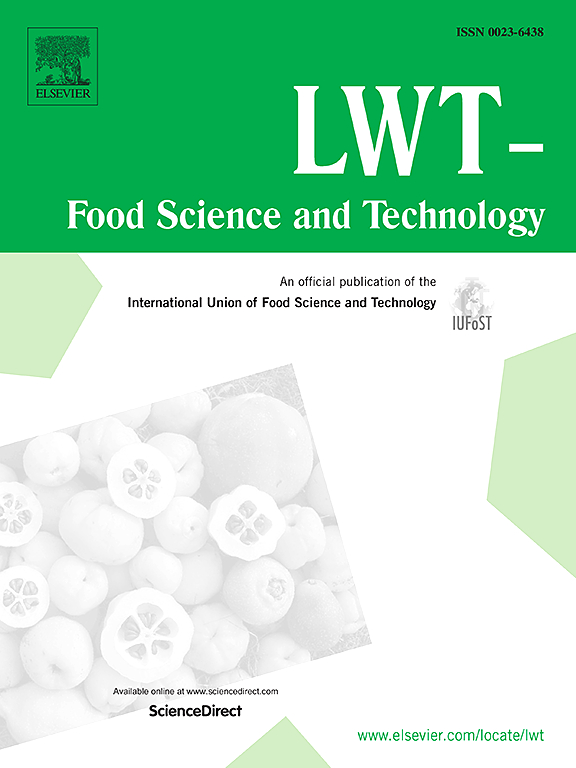Influence of pigment composition on antioxidant capacity of different tomato (Solanum lycopersicum L.)
IF 6
1区 农林科学
Q1 FOOD SCIENCE & TECHNOLOGY
引用次数: 0
Abstract
To investigate the relationship between pigments and antioxidant capacity in tomato fruits, the content of pigment substances (lycopene, carotenoids, flavonoids, anthocyanins, chlorophylls), the activities of oxidatively active enzymes (SOD, POD, CAT), MDA and antioxidant capacity (FRAP, DPPH, ABTS) in 30 ripening tomato fruits were measured in this study. The results showed that different tomatoes differed in pigment content, oxidatively active enzyme activities, and antioxidant capacity; the results of correlation analysis illustrated that the free radical scavenging capacities for FRAP, DPPH, and ABTS of five pigments are different. Principal Component Analysis (PCA) showed that the anthocyanin-rich purple cultivars 'yoom', 'Black Pearl', and 'Wagner' have stronger comprehensive antioxidant capacity. It can be concluded that lycopene was the key pigment affecting the antioxidant capacity from the calculated combined scores and weights of each index on the five principal components by linear combination coefficients. The results of the study provide a theoretical basis for tomato fruit color breeding and the development and utilization of functional substances.
色素组成对不同番茄抗氧化能力的影响
为探讨番茄果实中色素与抗氧化能力的关系,本研究测定了30个成熟番茄果实中色素物质(番茄红素、类胡萝卜素、黄酮类、花青素、叶绿素)含量、氧化活性酶(SOD、POD、CAT)、丙二醛(MDA)活性和抗氧化能力(FRAP、DPPH、ABTS)。结果表明:不同番茄在色素含量、氧化酶活性和抗氧化能力方面存在差异;相关分析结果表明,5种色素对FRAP、DPPH和ABTS的自由基清除能力不同。主成分分析表明,富花青素紫色品种yoom、Black Pearl和Wagner具有较强的综合抗氧化能力。通过线性组合系数计算各指标对5个主成分的综合得分和权重,得出番茄红素是影响抗氧化能力的关键色素。研究结果为番茄果实颜色的选育和功能物质的开发利用提供了理论依据。
本文章由计算机程序翻译,如有差异,请以英文原文为准。
求助全文
约1分钟内获得全文
求助全文
来源期刊

LWT - Food Science and Technology
工程技术-食品科技
CiteScore
11.80
自引率
6.70%
发文量
1724
审稿时长
65 days
期刊介绍:
LWT - Food Science and Technology is an international journal that publishes innovative papers in the fields of food chemistry, biochemistry, microbiology, technology and nutrition. The work described should be innovative either in the approach or in the methods used. The significance of the results either for the science community or for the food industry must also be specified. Contributions written in English are welcomed in the form of review articles, short reviews, research papers, and research notes. Papers featuring animal trials and cell cultures are outside the scope of the journal and will not be considered for publication.
 求助内容:
求助内容: 应助结果提醒方式:
应助结果提醒方式:


